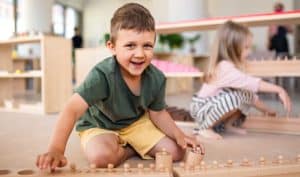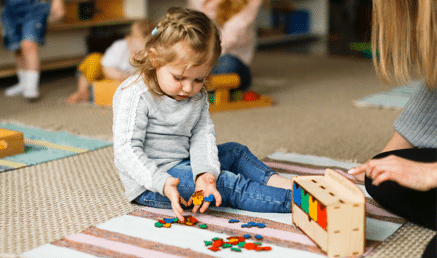
“It’s our polite nudge in the ribs to help you and your team stay organised and on task.”
This week’s subject is: Inclusive environment.
Element 3.2.1: Outdoor and indoor spaces are organised and adapted to support every child’s participation and to engage every child in quality experiences in both built and natural environments.
Does the design and layout of the indoor and outdoor environments support inclusion by meeting the diverse needs and interests of all children?
Educators should regularly reflect on the layout, design and setup of the physical environment to analyse whether and how it meets the individual needs of children whilst providing them with opportunities to engage in a range of flexible, open-ended play and learning experiences in both independent and group interactions as well as providing space and opportunities for quiet, active and unstructured play.
Ensure you collect information and feedback from children and families in the planning process to support the creation of inclusive, welcoming environments that reflect the backgrounds of children, fostering a sense of belonging.
When reflecting with your team, consider the following:
-
- Are all areas of the physical environment easily accessible to children with varying mobility needs?
- Does the environment allow and encourage free flow of activities throughout the day?
- What strategies are implemented to support children to experience a sense of belonging while at the service?
- How do we ensure that the room layout and equipment are safe and accommodate children with physical disabilities or sensory sensitivities?
- What strategies or modifications are made for children who need to reduce sensory input, such as noise-canceling headphones or soft lighting?
- Are there clear, unobstructed pathways for children using mobility aids like wheelchairs or walkers?
- Does the environment cater to children with sensory processing difficulties, such as providing quiet areas or sensory-friendly spaces?
- How are children and families involved in the planning process of the physical environment?
- What strategies are implemented to maintain a relaxed atmosphere and manage excessive noise levels?
- Are a wide variety of open-ended resources and materials provided in both indoor and outdoor environments, including opportunities for connection with the natural environment?
- How do we ensure children are provided with appropriate levels of challenge and risk-taking, suitable to their level of development whilst ensuring the safety of all children?
- How do we measure the success of the layout of the environment & do we regularly evaluate the effectiveness and inclusiveness of the physical environment?
- What strategies are implemented to support the development of children’s curiosity, creativity, engagement and understanding of indoor and outdoor environments?
- Are visual displays in the classroom (e.g., labels, signs) clear and accessible to children with varying levels of literacy and language skills?
- How adaptable is the physical environment to changing needs or unexpected challenges?
- How does the physical environment support children to be independent in their everyday activities and routines i.e., hand washing, toileting, accessing their belongings etc.?
Resources:
The Environment as the Third Teacher
ECA- Statement on the inclusion of every child in early childhood education and care
Amplify- Simple ways to promote inclusive play in any early learning environment: Sensory processing
NQS and DDA poster- Physical environment
Guide to the NQF: Element 3.2.1: Inclusive environment, Exceeding guidance for standard 3.2:Use
We hear you: Breaking down inclusion barriers and myths
Within System7 go to Quality Area 3/ Modules 6, 7 & 8 to submit self-assessment notes and if required, open a QIP issue if you identify any areas of improvement.
The Childcare Centre Desktop has a range of resources to assist services with inclusive environment. These include the Physical Environment Audit, Physical Environment and Parent Journey Procedure, Outdoor Environment and Playground Safety Audit Schedule, Physical Environment Policy, Inclusive Audit and much more.
Resources, NQS Element, Regulation and System7 links:
Childcare Centre Desktop – Childcare Centre Desktop
National Quality Standard – QA 3/ 3.2.1- Inclusive Environment
National Regulations – 73, 75, 76, 105, 109, 113, 157
System7 Module – QA3/ Modules 6, 7 & 8
If you have any questions send us a note via the Contact page here!




